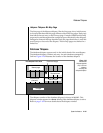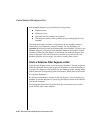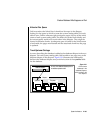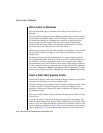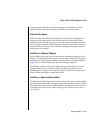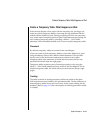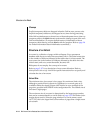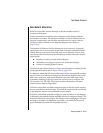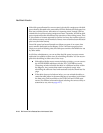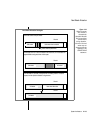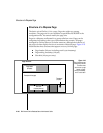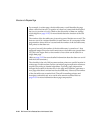
System Architecture 2-115
Structure of an Extent
Page Types
Within the extent, individual pages contain different types of data. Extent
pages can be separated into five categories:
■ Data pages
■ Index pages (root, branch, and leaf pages)
■ Bit-map pages (a 4-bit bit map if the table contains a VARCHAR, BYTE,
or TEXT data type or if the length of one row is greater than BUFFSIZE;
otherwise, a 2-bit bit map)
■ Blob pages
■ Free pages
Refer to page 2-120 for further information about the structure of a dbspace
data page. Refer to page 2-133 for further information about the structure of
a dbspace index page. Refer to page 2-142 for further information about the
structure of a dbspace bit-map page. Refer to page 2-145 for further infor-
mation about the structure of a dbspace blob page.
An extent might or might not include all five page types. Each page type
serves a different function within the extent.
Data pages contain the data rows for the table.
Index pages contain the index information for the table.
Bit-map pages contain control information that monitors the fullness of every
page in the extent.
Blob pages contain blobs that are stored with the data rows in the dbspace.
(Blobs that reside in a blobspace are stored in blobpages, a structure that is
completely different than the structure of a dbspace blob page. Refer to
page 2-148 for further information about storing a blob in a blobspace
blobpage.)
Free pages are pages in the extent that are allocated for tblspace use but whose
function has not yet been defined. Free pages can be used to store any kind
of information: data, index, blob, or bit-map.
Figure 2-23 illustrates the possible structure of a table with an initial extent
size of 8 pages and a next extent size of 16 pages.



